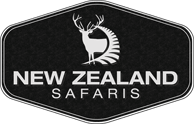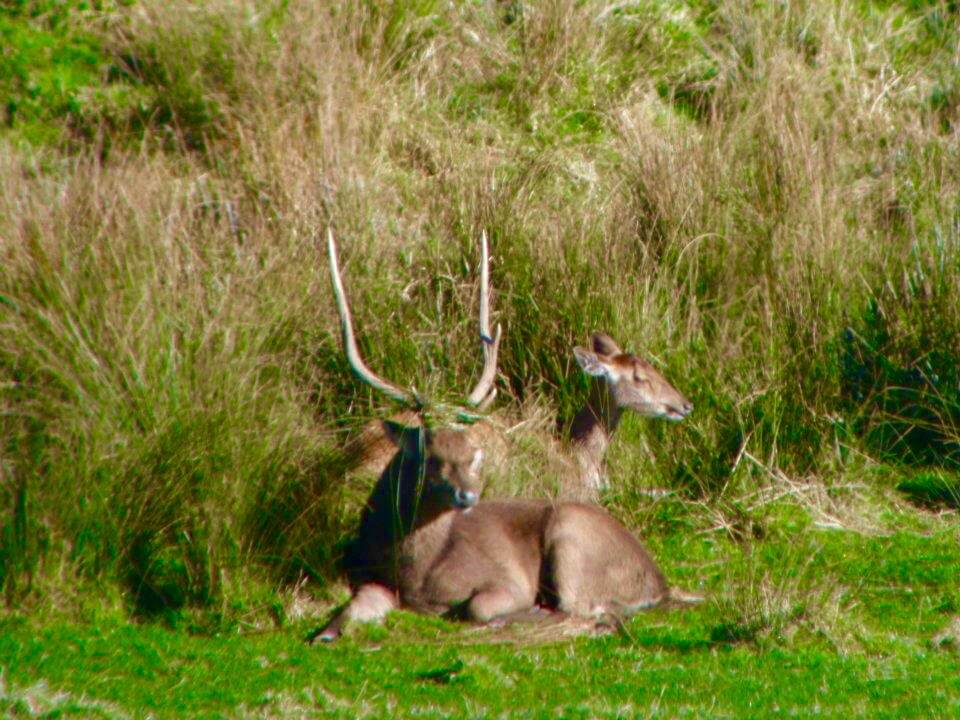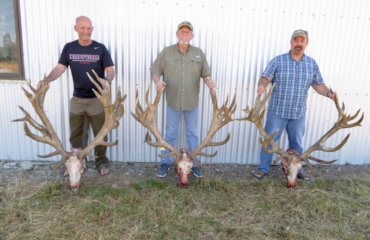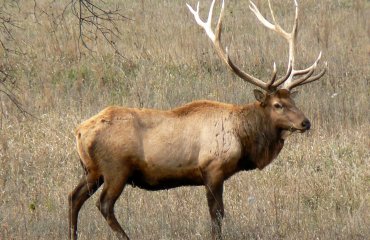What is a rusa deer?
A rusa deer (Rusa timorensis) is one of the most elusive deer to be found in the New Zealand bush. New Zealand Safaris offers rusa deer hunts in both New Zealand and Australia.
Description
Size: Male height is about 1060 mm at the shoulder and weighing 122 kg, females 810 mm shoulder height and weighing up to 70 kg.
Colour: Males dark reddish-brown summer coat changing to dark greyish-brown in autumn. Females pale yellowish-red in summer and greyish-red in winter. Chin, throat and underparts cream.
Antlers: Present in males only. Antlers cast December-January and new growth complete by May. Normally 3 points on each antler, with the inner tine longer than the outer and nearly parallel with the inner tine of the other antler.
Social behaviour: Wary and semi-nocturnal rusa spend much of the day holed up in thick vegetation cover. They live in small groups and have relatively small home ranges. Prefer mixed grass areas for feeding and often utilise adjacent farm paddocks and crops.
Reproduction: Rut commences mid-July and continues into August.
Males collect a harem of females. The actual male rusa’s roar could be described as a short husky growl rather than the drawn out bellow of a red stag. Males roar infrequently perhaps only 2-3 times a day with concentrated activity early morning and late afternoon.
Males wallow and mark their territory with scrapes. While servicing these scrapes, males leave an unmistakeable scent that could be described as a pungent sickly sweet aroma.
Gestation period: About 240 days.
Birthing: Fawns are born March – April. Twins rare.
Nomenclature: Male = stag. Female = hind. Young = fawn/calf.
Hunting Tips:
| Characteristics/behaviour | Hunting response |
|---|---|
| Rusa are a medium sized deer. | Rifle ccalibre of .270and above are suitable for shooting rusa deer. |
| Occupy areas of thick cover with warm aspect and adjacent to open grazing areas. | Seek out suitable habitat and either:Hunt very slowly, stopping often to look around as rusa are often very hard to see amongst dense vegetation.Stake out a warm clearing (especially in winter) and wait for a deer to come to feed, often involves a long shot. (Probably the more successful method.) |
| Semi-nocturnal and active mainly early morning and late afternoon, lay up in thick cover during much of the day. | Hunt or be at the stake out location early morning or late afternoon when deer likely to be more active. Rusa Stags rut from June-October. |
| Rusa are rarely encountered on their own. | When a rusa is sighted be alert as others may be in close proximity but hidden from view. |
| Sign of rusa includes a network of well used trails and tunnels connecting bedding sites with feeding areas. | Stake out areas where recently used tracking systems are found accessing feeding areas. |




